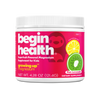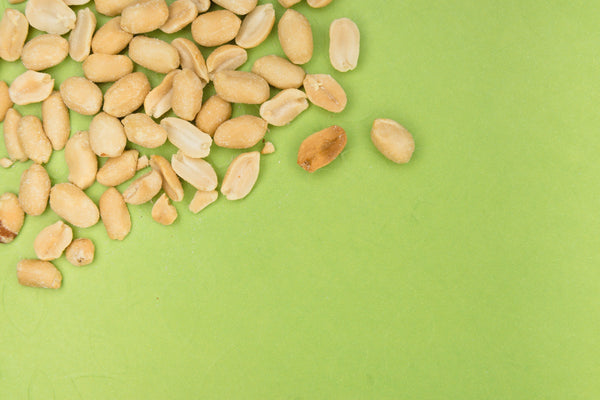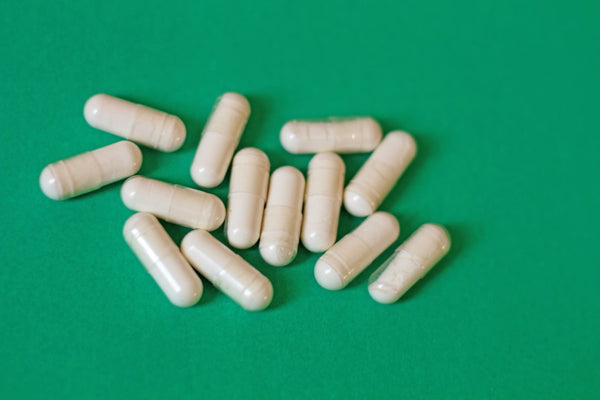The Best Types of Magnesium for a Healthy Digestion: Optimizing Gut Health
share this article

When it comes to supporting healthy digestion, it's important to understand which type of magnesium can be beneficial. While our Growing Up Prebiotics can help kids create softer and more frequent bowel movements through high-quality prebiotics from chicory root fiber [8], combining the prebiotics with a magnesium supplement may be a helpful approach to promote regularity and to support constipation relief. Even though we always encourage obtaining nutrients from whole food sources first, we understand that it can be challenging with picky eaters. Therefore, incorporating a magnesium supplement for constipation may offer one additional tool to support your kiddo.
In this article, we will explore the different variations of magnesium, their unique benefits, and which variety may be able to support digestion and gut health.
Magnesium Citrate
Magnesium Citrate is often used to help promote constipation relief [4]. It is available in either a powder or liquid form and works as a laxative by drawing water into the intestines to lubricate the stool. Make sure to drink water with this form to ensure it works effectively, since water will help move the stool along. It is typically recommended for short-term use, for people aged 2 and older [1]. However, lower doses can be safely taken daily to promote regular bowel movements and provide your body with magnesium [6].
Magnesium Glycinate
Magnesium Glycinate is well-known for its ability to support relaxation, improve sleep, and relieve muscle tension. Unlike other forms of magnesium, it is the least likely to cause digestive discomfort in adults [7]. However, it may not be the best option for relieving constipation due to its lack of laxative effect compared to Magnesium Citrate.
Daily reads to help your little ones lead happier and healthier lives.
Join the
Happy Gut Club
Magnesium Oxide
Magnesium oxide is commonly used as a dietary supplement to provide a laxative effect for relief from constipation. It works by pulling water into the intestines to move stool along. However, it is important to note that magnesium oxide is not as easily absorbed by the body compared to other forms of magnesium [3]. Because of this, it may not be the best long-term option for a magnesium deficiency. Additionally, taking higher doses of magnesium oxide may lead to digestive side effects such as bloating and diarrhea.
Studies indicate that combining both a probiotic, specifically lactobacillus, and magnesium oxide are effective in improving stooling frequency for toddlers and kids over the age of six months who struggle with functional constipation [9].
Magnesium Carbonate
Magnesium carbonate is a readily absorbed form of magnesium that can effectively neutralize excess stomach acid. This option is for those seeking support for relief from indigestion or acid reflux because it acts similar to an antacid [3].
Magnesium Taurate
If the goal is to support cardiovascular health and regulate blood pressure, Magnesium Taurate is the form that may best support this goal [3]. However, it's important to note that it doesn't have any laxative properties. Therefore if you're specifically looking for constipation relief, it might not be your best option.
How to Choose Which Type of Magnesium Supplement for a Healthy Digestion
Depending on what your goals are, different variations of magnesium can produce different results. Among the several different types of magnesium, magnesium citrate and oxide have shown to be commonly used for constipation relief [1,2,3]. Although magnesium can be taken any time of the day just like our Growing Up Prebiotics, it’s important to choose a time that works specifically for your little one’s individual nutrition and health goals.
Is Magnesium Safe for Kids?
It’s best to provide food sources of magnesium first, but a magnesium supplement can also be a safe option to support your little one’s intake when the proper dosage is administered. The body only absorbs 30% to 40% of magnesium intake and expels the rest, either via the kidneys or the bowels [10]. However, it is important to note that magnesium supplements should not be consumed in amounts above the upper limit unless directed by a healthcare professional [10]. The Upper Limit for Magnesium is as follows:
- Birth to 12 months: not established
- Children 1 – 3 years: 65 mg
- Children 4 – 8 years: 110 mg
- Children 9 – 18 years: 350 mg
As a reference, below is the average recommended dietary allowance (RDA) amount of magnesium for infants and kids daily (in milligrams) by National Institute of Health:
|
Life Stage |
Recommended Amount |
|---|---|
|
Birth to 6 months |
30 mg |
| Infants 7-12 months |
75 mg |
|
Children 1-3 years |
80 mg |
|
Children 4-8 years |
130 mg |
|
Children 9-13 years |
240 mg |
As always, it’s important to check with your pediatrician or healthcare provider first before starting you or your kids on a brand new supplement. When it comes to supplements, we recommend looking for options that have been third-party tested and do not contain filler ingredients such as artificial colors, talc, or titanium dioxide.
Our Growing Up Magnesium for kids contains 2 types of magnesium in addition to prebiotics from agave inulin and kiwifruit powder to help kids with magnesium intake and gentle digestion.
Always consult with a healthcare provider before giving your toddler or kid any magnesium supplements to ensure it is suitable for their specific, individual needs.
Magnesium citrate and oxide come are commonly used for supporting constipation symptoms because they may have a similar effect as laxatives. On the other hand, magnesium glycinate is highly absorbed by the body and causes minimal digestive discomfort. Additional magnesium options include carbonate and taurate, which offer specific advantages like promoting brain and cardiovascular health.


















